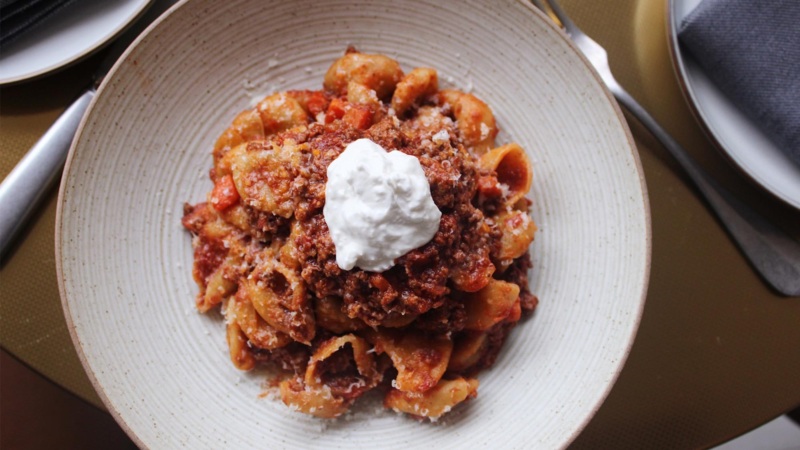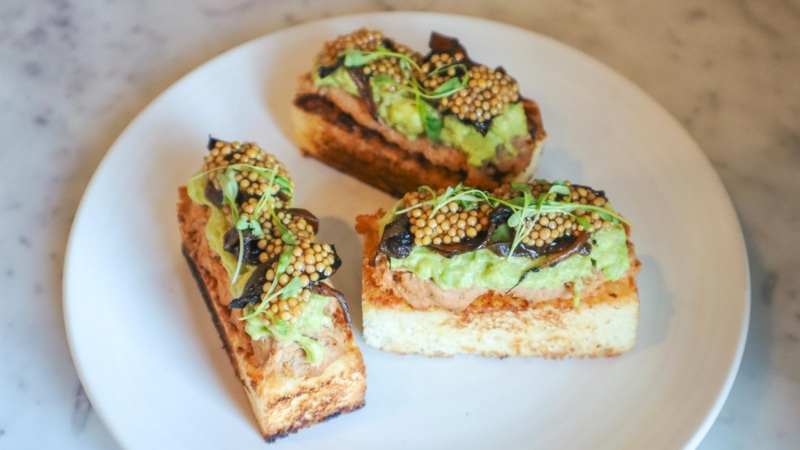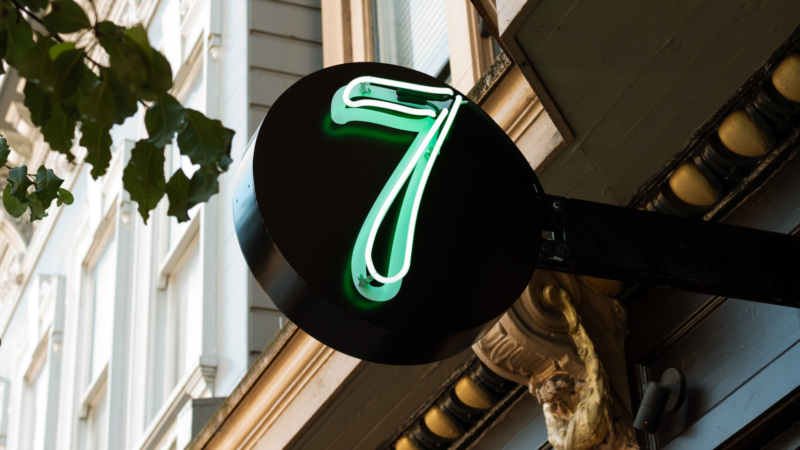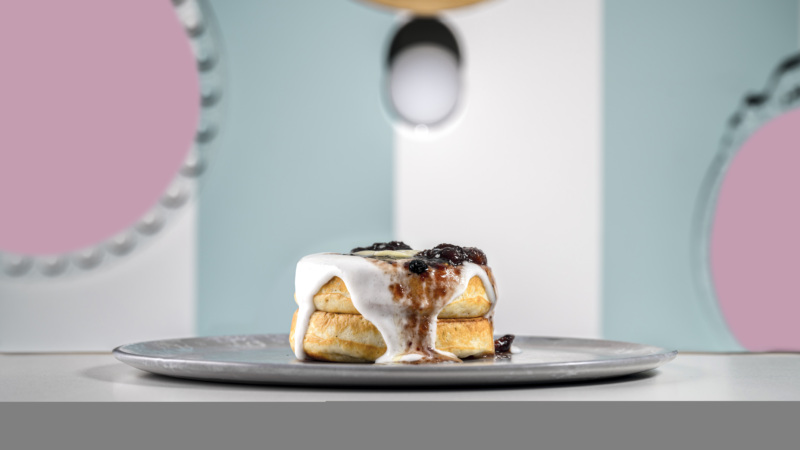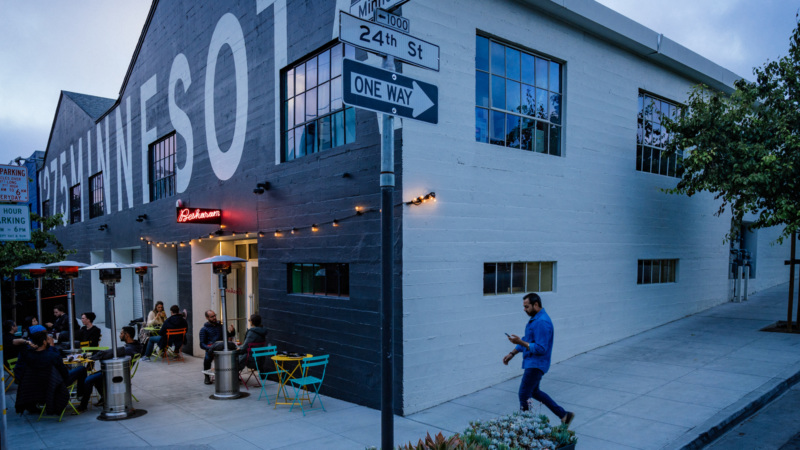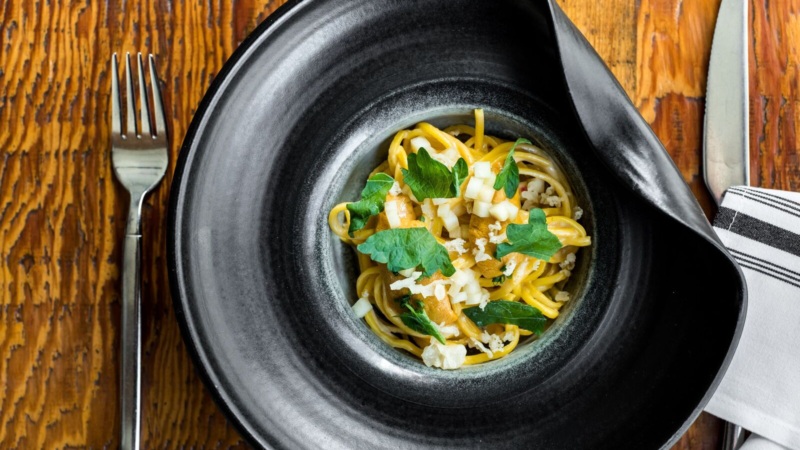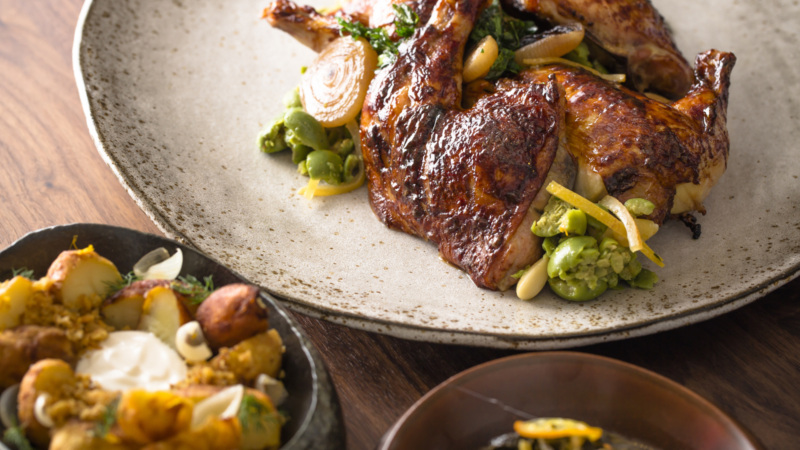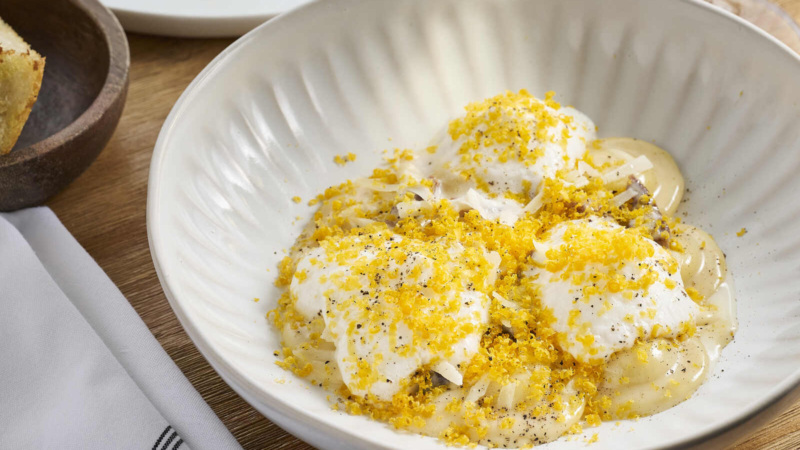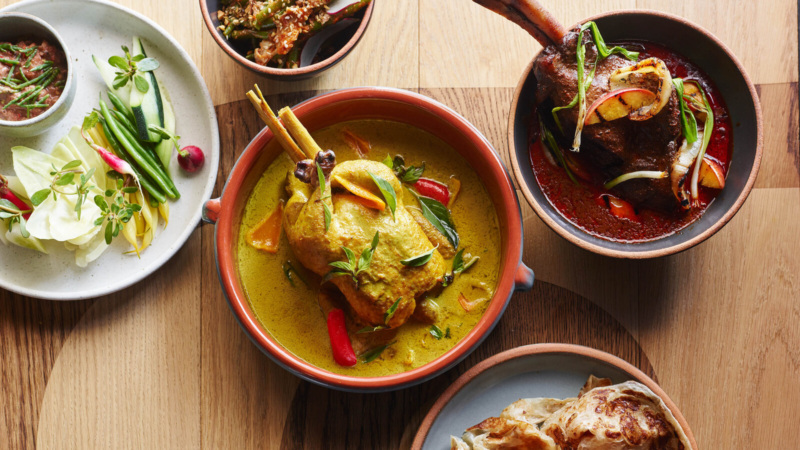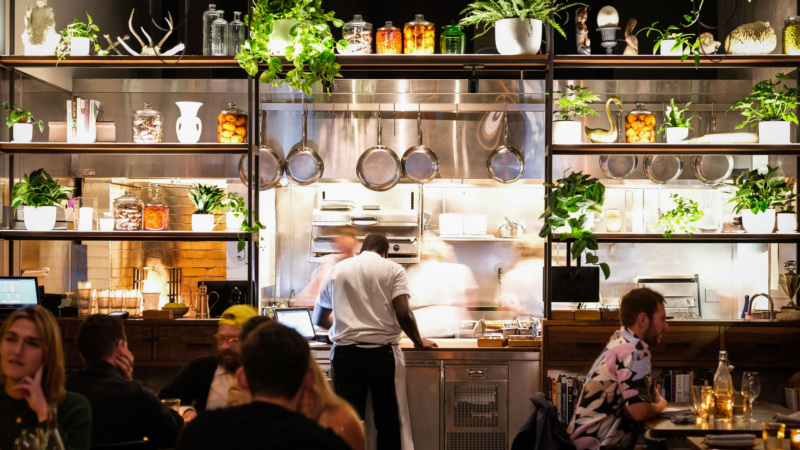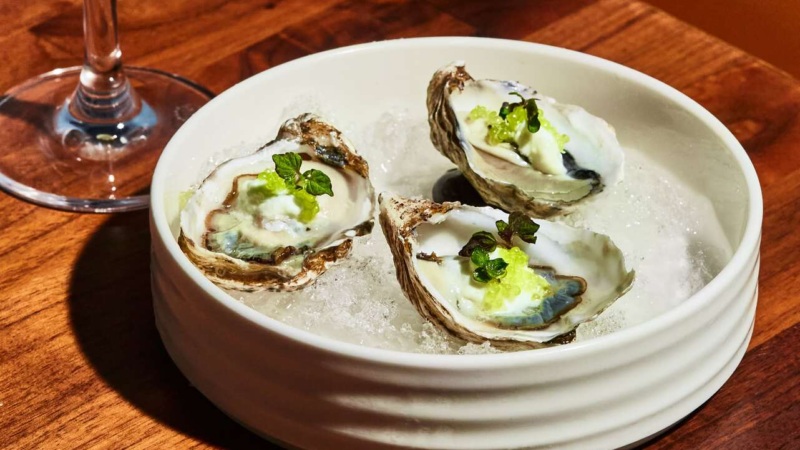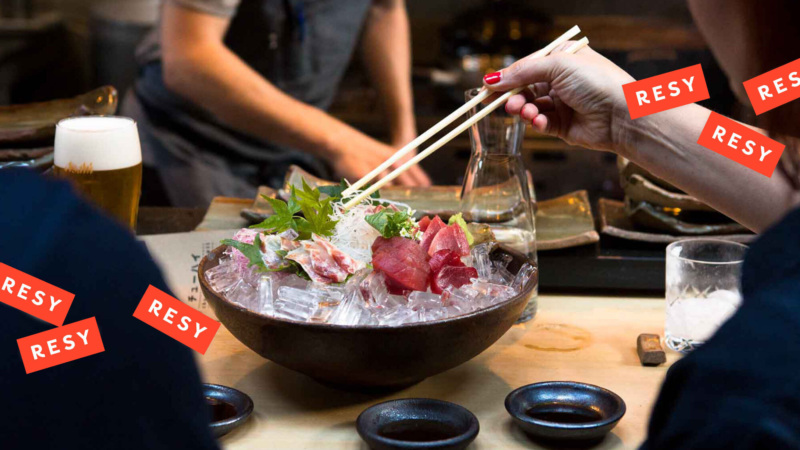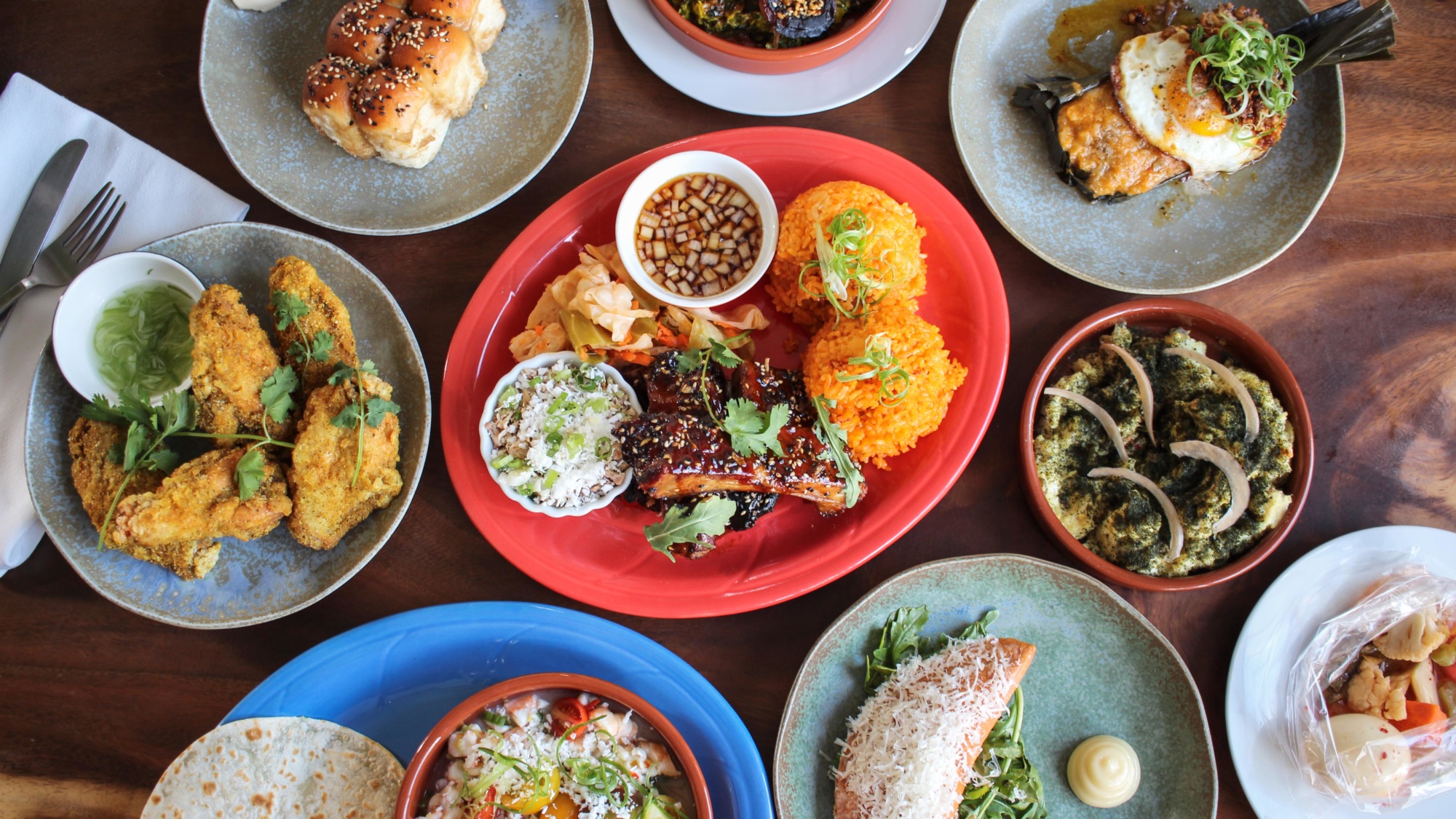
Shawn Camacho and Shawn Naputi of Prubechu Talk Chamorro Community — and Food
You won’t find another restaurant in America quite like Prubechu.
San Francisco’s only Guamanian restaurant is run by friends and business partners, Shawn Camacho and Shawn Naputi (aka the Shawns). The restaurant opened in 2014 with a tasting menu format before relocating a few blocks away to its current space in 2019, switching to a family-style, a la carte format, and garnering a spot in Esquire’s Best New Restaurant list for 2020. We talked with The Shawns to learn a bit more about their origin story, their vision, and their incredible restaurant.
Resy: Let’s start here. How did you two meet?
Shawn Camacho (C): We met in San Francisco. Strangely enough we found out that we ran in all the same circles growing up in Guam. We just never happened to meet each other back home — which is a strange coincidence on an island as small as Guam.
What was it like growing up there?
C: Guam is a paradise island! Growing up on Guam was amazing; our families are still there so it is definitely still home. It’s a place where family, community and traditions are revered. We have an amazing cuisine that was a product of centuries of colonization, a silver lining I suppose. As the slogan goes, “It’s where America’s Day Begins.”
Shawn Naputi (N): We grew up in a time where we barely stayed in the house. We were always out in the community with our neighbors. We were always gathering around food at parties and gatherings. What should people know about Guam? Hot, humid, easygoing and prideful.
Is there a big Guamanian population here in San Francisco? Where do most folks go when they leave?
C: There is a huge diaspora living around the world. There are more Chamorros living off island than on island. It seems that the largest populations are on the West Coast — particularly San Diego, Los Angeles, Washington, and the Bay. Our restaurant has become somewhat a hub for these people.
N: As we moved out here it was automatic to find the Chamorros around us, circling back to the story of how we met. Circles of friends find other circles of friends and eventually the community grows and everyone knows each other. This happens even more at the restaurant because now the Chamorro community is coming to us.

How did Prubechu come about? What does “Prubechu” mean?
C: The short story: We had talked about this years before we were lucky enough to find our first location near 24th street. Back then we had no idea what it could be or what it could become. Cut to 2014, I get a call from Chef saying he had a space and he wanted to do Chamorro food. I quit my job that night. Chef went to Guam for a few weeks to get inspiration and ingredients. I stayed back and started prepping the space — painting, scrubbing floors, deep cleaning. February 4th, 2014, we opened with not much more than three induction burners, a Nomiku circulator, and an electric smoker, a Roberta convection oven and a live fire grill in the parking lot. We did a six-course tasting menu out of that tiny space and limited facility. Humble beginnings for sure.
N: Prubechu means “to benefit” or “to profit.”
C: I’ve recently learned from an old Chamorro lady that visited the restaurant that it sometimes could be interpreted as “to be lucky.”
How would you describe Chamorro food? What’re some classic foods and flavor profiles you ate growing up there?
N: Classic dishes I grew up eating were red rice, chicken kelaguen and chalakilis. Flavor profiles of our food are char, smokey, high acid and a little sweetness for balance.
C: Tinaktak, kadun pika and kelaguen were my favorites growing up.
There’s so much on the menu — help us learn a little. Tell us about the following: Tuba.
Fermented nectar from the flowers of the coconut tree — the only native booze that our ancestors learned from the Filipinos.
Titiyas?
It’s the Chamorro mispronunciation of “tortillas.” Introduced by the Spanish and now a staple on the Chamorro Fiesta table.
Lechen Birenghenas?
We barbecue eggplant and marinate it with coconut milk, lemon, scallions and cherry tomatoes. A super classic dish that is always part of a fiesta spread. Not typically prepared for a weekly family dinner as it requires firing up the grill.
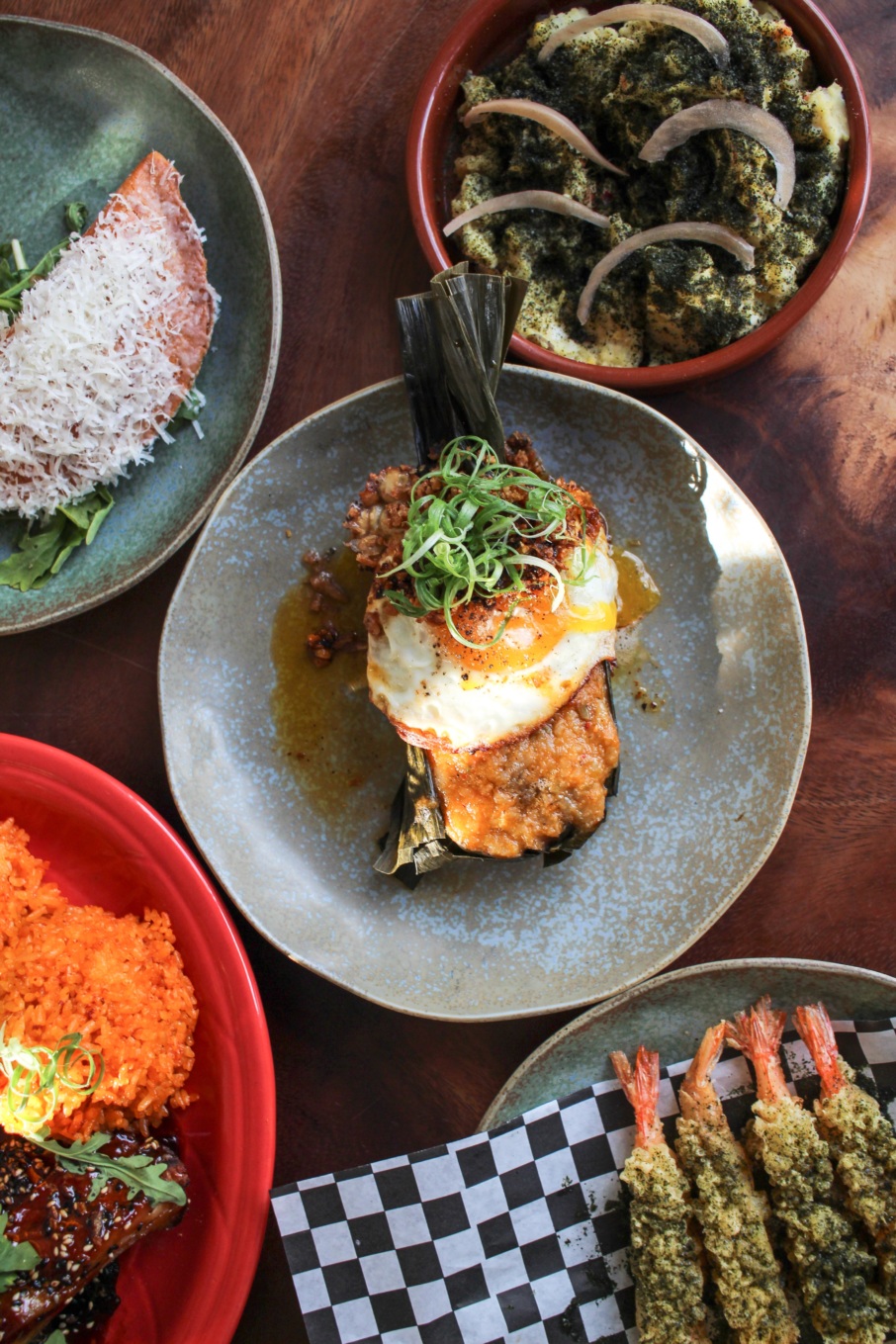
Golai Hagon Suni?
At Prubechu, it is spinach braised in coconut milk with turmeric and lemon. It’s like a high acid creamed spinach…but with coconut milk instead of cream. Another classic dish that is always on the fiesta table. Traditionally it is made with taro(suni) leaf(hagon) but can be done with other leafy greens — usually spinach these days.
Pika?
Our word for “spicy.”
Fina “Denne”?
The iconic table sauce from Guam and the Marianas. Most typically, soy sauce, vinegar, onions and hot pepper but there are many variations. Every household on Guam has a jar in the fridge. You can find it at almost every restaurant. The fiesta tables have a specific section for the Fina’denne’
Dinanche?
A hot sauce or paste. Many many different recipes that vary from family to family. Ours is made with hot peppers, garlic, onions, eggplant and coconut milk. Super spicy but it’s so much more than that. It’s flavorful, rich and complex.
Tinaktak?
This is a technique of braising a protein in coconut milk and lemon with aromatics. The word “tinaktak” is an onomatopoeia of the sound of chopping. Another classic dish that we grew up eating in the house. A classic dish that is somewhat similar to stroganoff but not quite.
Kelaguen?
Kelaguen is “ceviche.” That said, our ceviche is most often done with lemon juice, coconut and hot pepper. We Kelaguen fish, shrimp, beef, binadu (venison), chicken, anything really. Another iconic dish from Guam and the Marianas. A staple at any gathering and has its own section on the fiesta table. So ubiquitous that even KFC on Guam has a version.
Kadiyu style?
It’s a hot, sour and coconut milk preparation that is done with fish. Super classic.
How’d you manage to navigate the pandemic? Did it change any of your offerings or the way you look at how the business side would work?
N: Honestly, things just kept coming our way and we never said no to any opportunity. The motto was to sell everything. Sell anything. Our whole patio vibe was forced on us due to the pandemic. We never thought about doing it like this, but in the end it worked out and we are super happy with it. Early pandemic we had to learn the whole packaging game. I had to create a menu that travelled well and was easy to reheat.
C: We experimented with concepts that were a bit out of our comfort zone. Chamorro Brisket Tacos, Staff Meal Series, a meal delivery of inspired dishes from our chefs, holiday meal kits, booze boxes. Business wise, we are running leaner than we ever have. We basically doubled our seating and working with half the staff we had pre-pandemic. It’s tough but we’re making it work.
What does the future hold from Prubechu? More restaurants? More of the same?
N: At this point, after enduring this past year in a half the sky’s the limit. More restaurants? Maybe. More of the same? Yes, no, maybe so. Sky’s the limit.
C: Right now, we’re focused on creating the best possible experience in our San Francisco location. The dream is to be able to bring our cuisine to more markets, eventually. What we are finding out is that people really love the food and vibe we have built and we are very encouraged by that.
Omar Mamoon is a San Francisco writer, cookie dough professional, and founder of nonprofit Libros Para Todos. Find him at @ommmar



